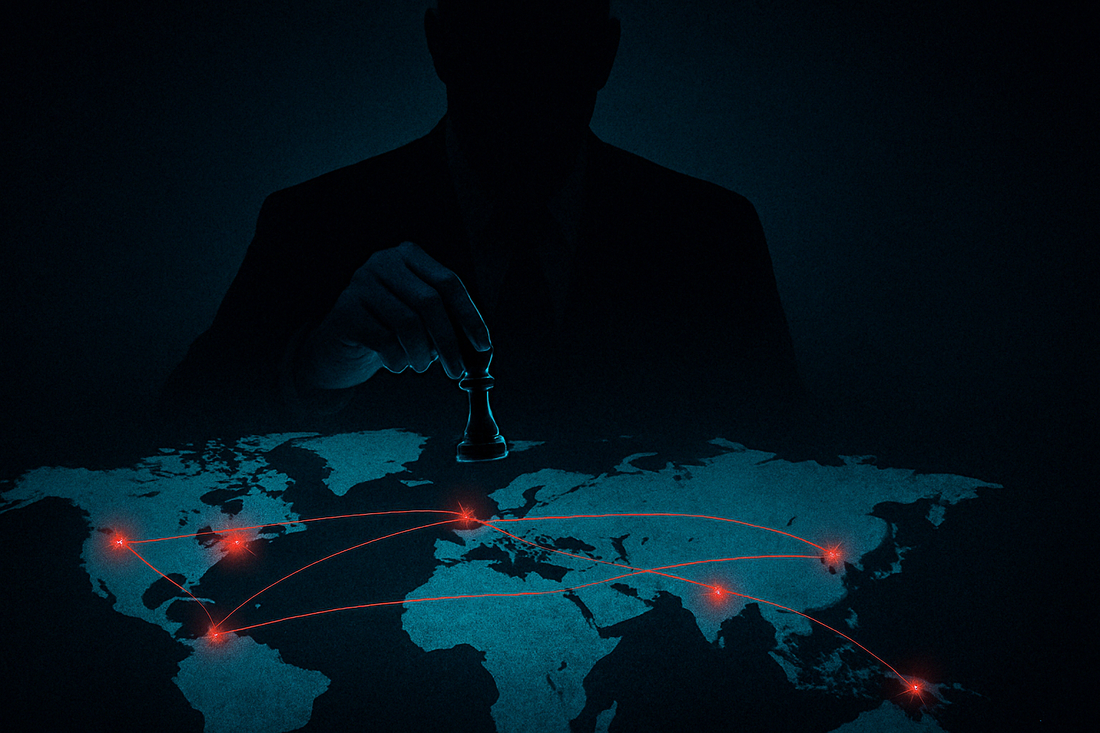
The Russian Mafia: From Gulags to Government
Origins in Blood and Ice
The Russian mafia didn’t rise from the streets. It rose from the gulags — the brutal prison camps of Stalin’s Soviet Union. While America’s Mafia was built on family, tradition, and codes of honor, the Russian mob was forged in frostbitten cells, where survival was everything and violence was law.
It started in the 1930s and 40s, when Stalin’s purges sent millions to labor camps. Inside those camps, a new kind of criminal class emerged — the vory v zakone, or “thieves-in-law.” These weren’t petty crooks. They were hardened survivors who developed their own underworld society with a strict code: no cooperation with authorities, no working a legitimate job, and total loyalty to the criminal world.
The vory were ruthless, intelligent, and organized. Tattoos told their story — each mark a badge of rank, skill, or time served. They didn’t just reject the system — they created their own. In a country run by fear and informants, these men became kings of the underground.
And when the Soviet Union collapsed in 1991, they were ready.
While politicians scrambled for power and oligarchs looted the economy, the vory stepped in with the one thing Russia now lacked: structure. They filled the power vacuum in the streets, the ports, the oil fields, and the banks. They weren’t just criminals — they were architects of the black market. Weapons, drugs, human trafficking, nuclear materials — nothing was off-limits.
In the 1990s, Russia wasn’t a nation. It was a mafia turf war. Entire cities were controlled by gangs. Car bombs became a daily sound in Moscow. Extortion, racketeering, kidnappings — every industry was under protection. And the lines between crime and politics blurred fast.
By the time Western media caught on, the Russian mafia wasn’t hiding in the shadows. It was doing business with government officials. It was embedded in state institutions. It had gone from gulags to government — and it did it without apology.
The collapse of the USSR didn’t just free Russia from communism — it unleashed a criminal empire with no moral code and no rivals.
And they weren’t just looking to run Russia.
They were looking to run the world.
The Oligarchs, the State & the Shadow Empire
When the Soviet Union fell, the state-owned industries were sold off in a chaotic fire sale. Oil, gas, steel, banking — entire sectors were privatized overnight, and the men who got in early became oligarchs. Some had political connections. Some had sheer ruthlessness. But most had something else: protection from the mob.
The Russian mafia didn’t just watch the rise of the oligarchs — they fueled it. They brokered deals, enforced contracts, and eliminated competition. In return, the oligarchs gave them access, legitimacy, and cover. It was a perfect marriage: one side had the wealth, the other had the muscle.
And then came the state.
Under Boris Yeltsin, Russia was a free-for-all. But when Vladimir Putin rose to power in 1999, he brought a different game. A former KGB agent, Putin understood the value of loyalty, secrecy, and control. He didn’t destroy the mafia — he absorbed it.
Putin centralized power and surrounded himself with a mix of ex-KGB men, oligarchs, and former criminals. The lines blurred. Was the state protecting the mob? Or was the mob protecting the state? In Russia, the answer didn’t matter. They were the same thing.
Over time, Russia stopped pretending to clean up corruption. Instead, it weaponized it. The mafia became a tool of foreign policy. Cybercrime units, disinformation campaigns, smuggling routes, offshore shell companies — all backed or tolerated by the state. Russian mobsters weren’t just thugs anymore. They were international players.
They bought property in London. Invested in American real estate. Infiltrated European banks. Used front companies to move billions. And because they were tied to the Kremlin, no one wanted to touch them. Sanction one oligarch, and you risk economic war.
This was the shadow empire. Not just gangsters in Adidas tracksuits — but billionaires in boardrooms, connected to oil pipelines, data leaks, and presidential palaces.
By the 2010s, the Russian mafia wasn’t just operating under the radar. It was influencing elections, laundering money through global markets, and offering services to dictators and kleptocrats around the world.
It had become a new kind of power — one that didn’t need flags, borders, or ideology.
Just cash, fear, and silence.
Cold Blood, Global Reach: Where They Are Now
The Russian mafia today isn’t what it used to be — because it doesn’t have to be. It no longer runs on flashy hits or brute-force intimidation. It runs on stealth, sophistication, and reach. It’s less “mob” and more network — a global machine with operatives, partners, and assets across continents.
In Russia, they’re still entrenched in key sectors: construction, energy, shipping, law enforcement. But the real power now lies in offshore accounts, proxy firms, and cutouts — layers of distance that protect the bosses and confuse investigators.
They’ve gone corporate. They’ve gone digital. And they’ve gone global.
Russian criminal syndicates are active in cybercrime — ransomware attacks, identity theft, phishing rings. U.S. intelligence agencies have traced major breaches back to state-tolerated gangs operating in cities like Moscow and St. Petersburg. These aren’t bedroom hackers. These are military-grade criminal teams, quietly sanctioned to destabilize the West while lining their own pockets.
They’ve also found cozy homes in places like Dubai, Cyprus, Israel, Spain, and even the U.S., laundering billions through real estate, shell companies, and luxury assets. If there’s money to be moved or power to be traded, there’s a Russian crew involved — quietly and efficiently.
And while their old-school tactics haven’t vanished — extortion, arms trafficking, and contract killings still happen — they now operate in a world of plausible deniability. The face of the modern Russian mob might be a venture capitalist. A CEO. A diplomat’s cousin. Someone who smiles for the cameras and signs legal paperwork — while sending encrypted instructions on burner phones.
But make no mistake: the blood is still there. The ruthlessness is intact. And the reach is wider than ever.
What makes the Russian mafia so dangerous today isn’t just their brutality — it’s that they’ve normalized corruption. They don’t hide from institutions. They become them. They don’t bribe officials. They are the officials.
From high-end cybercrime to back-alley executions, from oil fields to data farms, the Russian mob isn’t just a relic of the past — it’s one of the most advanced criminal-political hybrids on the planet.
And while Western law enforcement still talks about fighting “organized crime,” the Russian mafia has already evolved beyond that label.
It’s not organized crime.
It’s organized influence.
What the World Still Doesn’t Understand About the Russian Mob
The world still talks about the Russian mafia like it’s some rogue element. Like it’s a fringe criminal group operating outside the system. But the truth is far more dangerous: the Russian mob isn’t outside the system — it is the system.
It doesn’t need to overthrow governments. It partners with them. It doesn’t need to infiltrate corporations. It builds them. It doesn’t just exploit global finance — it’s embedded inside it, laundering billions through Western institutions that turn a blind eye in exchange for fees, taxes, or silence.
What most people don’t understand is that the Russian mafia isn’t just a threat — it’s a model. For how to run power through fear, secrecy, and corruption while maintaining a surface of legitimacy. It’s not hiding in the shadows anymore. It’s wearing suits. Attending forums. Investing in clean energy. Donating to charities. All while pulling strings behind the scenes.
They don’t need to walk into a bank with a gun. They own the guy who owns the guy who owns the bank.
And it’s not just a Russian problem. This is the future of organized power — decentralized, deniable, digital. The Russian mob just mastered it first. Where the American Mafia collapsed under its own weight, the Russian mafia evolved. It stopped chasing headlines and started chasing leverage.
Western media likes clean villains. But the Russian mob doesn’t give you a Gotti or a Capone. It gives you a smiling executive, a clean apartment in London, a fake passport, and a network of shell companies so deep you’ll never find the center.
It’s not a gang.
It’s a ghost in the machine.
And until the world realizes that, they’ll keep fighting an enemy that’s already inside the walls.







